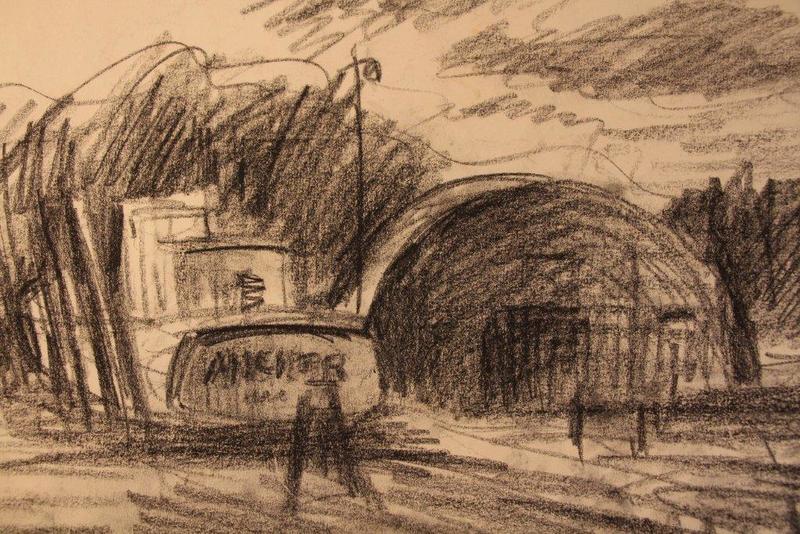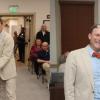This is the first of a three-part series on Howard Schroeder on the eve of the 20th anniversary of his death. For 50 years, Howard Schroeder captured the changing landscape of Lewes.
The Lewes that Howard Schroeder knew as a young soldier and newcomer bore little resemblance to the evolving community that he later painted in iconic images that reside in collective memory.
He first encountered a barren coastline and makeshift war barracks in the unspoiled sands of Cape Henlopen. But nearby, he found a more welcoming view - a quaint, unpretentious fishing village with rows of fishing vessels at its main dock. Eventually, he would buy a home for his family overlooking the Lewes canal and its sea birds, old boats and an occasional oyster schooner at dock.
The simplicity of life inspired his creativity. Little did he know that his enchantment with the community would feed a legendary career as a beloved artist who excelled in many mediums, from pencil and charcoal sketching to watercolor and oil painting.
Lewes will celebrate his work at an exhibition Saturday, Sept. 20, to benefit the new Lewes Public Library. Among the sketches and paintings on display will be several from Lewes, including a 1973 watercolor of the Roosevelt Inlet, a 1960 pen illustration of the Lewes fishing shacks and a 1953 charcoal drawing of the boatyard.
His creations remain in demand as some are very reminiscent of a bygone era. And that, in fact, was one of Schroeder’s goals. He was determined to capture on paper and canvas a pictorial account of the slow, but inevitable development of Lewes.
University of Delaware professor Byron Shurtleff once said to him: “You have provided a great many people with a deepened sense of place with your articulated and revealing images.”
Schroeder put Lewes on the map as early as July 1942, with a watercolor called “No. 17 Ready for Planting.” Life magazine selected it as one of 12 winners in a competition that drew 1,500 entries. The painting showed several men on a boat lowering a mine in the water at the entrance to the Delaware Bay. Other paintings he created for the Army can be found in the Lewes area, including at the library.
When the war concluded, the Brooklyn native decided to remain in Lewes and raise his family. He and his wife, Marian, had six children and sent them all to college with the money he earned through art. The children are John, Rob, Stephen, and Howard Schroeder, and Carol Short. Another daughter, Gail Fields, is deceased.
The couple opened The Art Age shop on Rehoboth Avenue, where they sold gifts, art supplies and paintings for 30 years.
Schroeder painted around the world, but preferred working close to Lewes and coastal Sussex County.
The Lewes fishing shacks area on the north end of Pilottown Road was a favorite spot in all seasons. It was just one mile from his home, and he visited the area often, painting the weathered, old shacks, or the characters that inhabited them.
A television crew from CBS News Sunday Morning, anchored by Charles Kuralt, filmed Howard at work along Pilottown Road in 1987. By then, the menhaden fleets he loved had sailed south permanently, and more expansive houses were replacing small cottages.
Prior to his death Sept. 8, 1995, Schroeder expressed remorse about the losses Lewes was experiencing.
“I as an artist don’t like this changing environment. I have yet to find an interesting way of painting a paved area of cement,” he once noted. “Gone for me are many of the places where I used to paint, old interesting farms and the life around them, marshes, dunes, etc. Many places have simply disappeared or, oddly enough, have been made inaccessible.”
To learn more about the Sept. 20 Schroeder exhibit, go to greaterlewesfoundation.org/Schroeder. To read more about Howard Schroeder, go to howardschroederart.com.
Look for Part 2 of the series in the Sept. 16 issue. Schroeder was influential in growing the Rehoboth Art League during its early and difficult days. He singlehandedly hung many exhibits and created a sketching studio. This story will look at his many contributions to the league and to the art community.























































